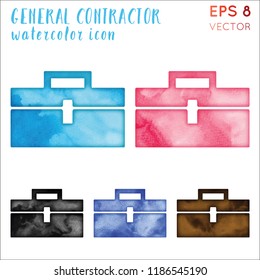Prior To Embarking On Your Paint Job, It Is Crucial To Understand The Key Differences Between Interior And Exterior Paint. This Understanding Can Greatly Influence The Success Of Your Job
Prior To Embarking On Your Paint Job, It Is Crucial To Understand The Key Differences Between Interior And Exterior Paint. This Understanding Can Greatly Influence The Success Of Your Job
Blog Article
Authored By-Fisker copyright
When you're choosing between exterior and interior paint, it's necessary to understand their basic distinctions that influence both efficiency and looks. Inside paints are crafted for reduced VOC levels and smoother surfaces, making them suitable for interior areas, while exterior paints are developed to withstand extreme climate condition and UV exposure. Each kind offers a distinctive function, however recognizing when to utilize one over the other can significantly influence your project's result. So, what aspects should you consider when making your choice?
Structure and Formulation
When choosing between interior and exterior paint, recognizing their structure and solution is important. Inside paints commonly consist of a reduced amount of unpredictable organic compounds (VOCs), making them much safer for indoor air quality. You'll see they frequently have a smoother coating, which boosts their capability to stand up to stains and allows for much easier cleaning. They're created to withstand the roughness of interior atmospheres, including differing humidity degrees and temperature variations.
On the other hand, exterior paints are created to withstand harsher conditions. They typically consist of higher levels of pigments and ingredients to stand up to fading from UV rays, as well as to prevent mildew and mold development. Their structure consists of extra binders and materials, which provide better attachment to surfaces exposed to the elements. This makes certain the paint can hold up against rainfall, snow, and fluctuating temperatures without peeling off or splitting.
Efficiency and Durability
Assessing performance and durability is crucial when choosing in between interior and exterior paint. Inside paint is designed for surface areas that experience less damage. minneapolis house staining resists fading and scuffing, making it perfect for living spaces and bedrooms. Nonetheless, residential painting plymouth may not hold up well in high-moisture areas like bathroom and kitchens without proper formula.
On the other hand, outside paint deals with harsher conditions. It's crafted to withstand UV rays, rain, and temperature variations. This sort of paint commonly contains additives that protect against mold and mold growth, making sure durability in numerous environments. When you use outside paint, you can anticipate it to last numerous years longer than indoor paint, offered it's used correctly.
Another crucial distinction lies in the surface choices. Interior paints usually have a range of coatings for aesthetic charm, while exterior paints focus on longevity over sheen. If you're looking for something that can manage the elements, outside paint is your best bet.
On the other hand, if you're concentrated on interior aesthetic appeals with less issue for extreme conditions, indoor paint could be ideal. Ultimately, your selection needs to straighten with the particular demands of the atmosphere.
Visual Factors to consider
A fresh coat of paint can change an area, but visual factors to consider play a crucial role in your option between interior and exterior options. When you're picking paint, think about the mood you want to produce. Interior paint permits you to check out a bigger range of shades and coatings, allowing you to reveal your individual design and improve your home's atmosphere. Whether you go with soft pastels or strong tones, the right indoor paint can make your areas really feel relaxing, vivid, or peaceful.
On the other hand, exterior paint needs to line up with your home's architecture and the surrounding atmosphere. Right here, you're not just making a style statement; you're also considering visual charm. Selecting shades that integrate with your area can increase your home's worth and visual appeal. Keep in mind that outside paint is also subject to fading and weather condition adjustments, so picking a classic shade can save you from regular repainting.
Inevitably, consider just how each alternative fits your vision. By straightening your paint selection with your preferred aesthetic, you can create spaces that mirror your individuality while keeping performance.
Conclusion
When it comes to choosing paint, understanding the essential differences in between interior and exterior choices is crucial. Inside paints concentrate on visual appeals and low VOCs, making them excellent for enhancing your indoor spaces. On the other hand, outside paints are made for longevity and climate resistance, safeguarding your home from the components. By considering your certain needs and the atmosphere, you can confidently pick the right paint to accomplish the appearance and long life you prefer for your room.
